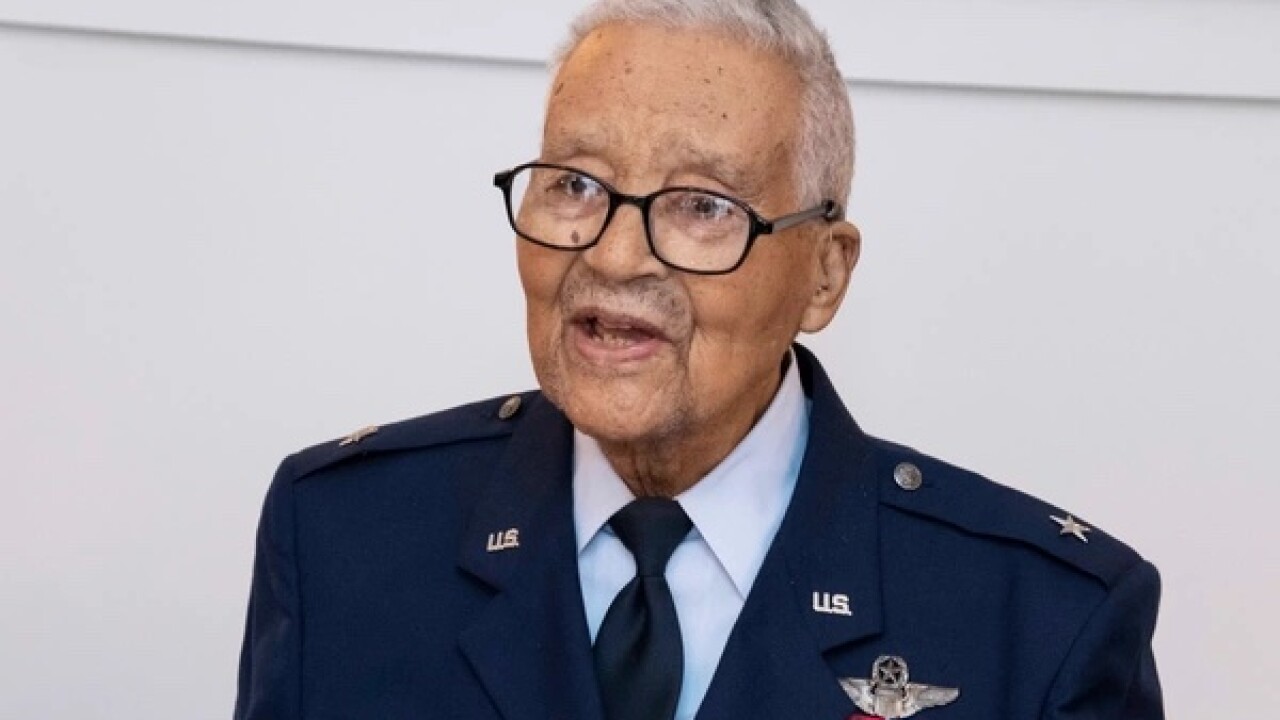KANSAS CITY, Mo. — Kansas City has strong ties to one of the country’s most decorated Tuskegee Airmen.
Brigadier General Charles E. McGee, who flew more than 400 combat missions in three wars, first came to the metro in 1950 when he was stationed at the now-closed Richards-Gabaur Air Force Base just south of Kansas City. The storied pilot became the base’s first Black commander in 1972. McGee retired from the military a year later and made Kansas City his home. He’d served his country for 30 years.
But retirement didn’t ground McGee’s interest in flying — or in Kansas City’s aviation community.
He became manager of Kansas City’s Municipal Airport, now called the Charles B. Wheeler Downtown Airport, in 1980. He stayed in that position until 1982. McGee later served on Kansas City’s Aviation Advisory Council.
To honor the legendary Tuskegee Airman, the city renamed the General Aviation Terminal at the downtown airport as the Charles E. McGee General Aviation Terminal on June 29, 2021. McGee, who was 101 at the time, attended the ceremony.
A plaque inside the terminal highlights the honors and achievements McGee earned in his military career, including:
- Bronze Star and Air Medal with 25 Oak Leaf Clusters;
- Distinguished Flying Cross with two Oak Leaf Clusters;
- Legion of Merit with Oak Leaf Cluster;
- An Air Force record for flying 100 or more combat missions in each of the wars he served: World War, the Korean War, and the Vietnam. In all, McGee flew 409 combat missions.
- Congressional Gold Medal in 2007 (an honor he shared with his fellow Tuskegee Airmen);
- Induction into the National Aviation Hall of Fame in 2011;
- The Federal Aviation Administration (FAA) also honored the fighter pilot by naming three sequential navigation markers called waypoints – “Tuskegee,” “Airman,” and “McGee,” — at Kansas City International Airport so “that McGee’s name would be spoken by pilots for years to come,” according to a story by Master Sgt. Robert Jennings for the Defense Visual Distribution Service.
McGee was born on December 7, 1919, in Cleveland, Ohio, and enlisted in the Army Air Forces in 1942. He passed the tests to enter the groundbreaking program to train Black soldiers interested in flying at the Tuskegee Institute in Alabama.
"(After) my first flight in a PT-17 — to be able to go up there and loop roll and spin and come back and put your feet on the ground — I was hooked!” he said in an interview posted on the Department of Defense’s (DOD) website. “Never have I forgotten that first day."
McGee earned his wings as a Tuskegee Airman — one of the first Black pilots in the U.S. military — on June 30, 1943. He was assigned to the famed 332nd Fighter Group in February 1944 and escorted U.S. Air Force bomber pilots in occupied Europe, according to the National World War II Museum.
As a Tuskegee Airman, McGee flew 137 combat missions. He shot down a German fighter plane on August 24, 1944, while escorting U.S. pilots over Czechoslovakia.
McGee continued his military service with the Air Force after WWII.
By the time he retired from active duty in 1973, he’d served in three wars and flown more combat missions than any other Air Force pilot, according to the National World War II Museum. The famous Red Tail pilot, who helped break the racial barriers for military aviators, had risen to the rank of colonel.
President Donald Trump promoted McGee to brigadier general on February 4, 2020.
McGee died on January 16, 2022. He was 102 years old.
—



